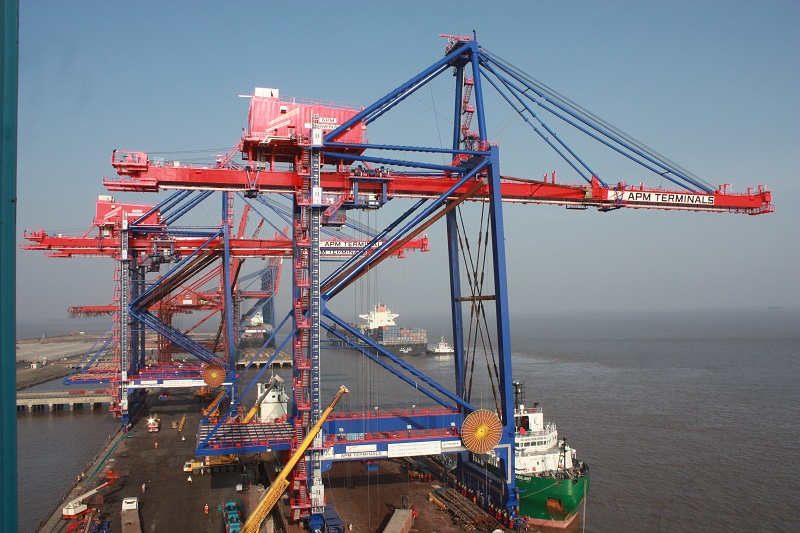August 25, 2020: APM Terminals Pipavav”s (Gujarat Pipavav Port Ltd) board has approved its expansion plan of about Rs 700 crore, which includes improving facilities for handling bigger ships and raising the container capacity to 1.6 million twenty-foot equivalent units (TEUs), a top company official said.
APM Terminals Pipavav currently has a capacity to handle up to 1.35 million TEUs of containers, 4-5 million tonnes of dry bulk cargo, 2 million tonnes of liquid cargo and about 2,50,000 cars per year.
During lockdown, the port handled more than 622 container trains, 1,86,000 TEUs, out of which 1,10,000 TEUs were by trains. The port also handled dry bulk shipments of 0.41 million metric tons and 0.21 million metric tons liquid in the June quarter of this fiscal.
“Though Indian economy contracted due to global slowdown and impact of COVID-19 on businesses, we believe the long-term growth potential of the economy is still intact,” APM Terminals Pipavav Managing Director Jakob Friis Sorensen told PTI in an e-mail interaction.
“Our board has approved an expansion plan of approx Rs 700 crore in improving the port”s ability to handle bigger ships and eventually expanding the container capacity to 1.6 million TEUs,” he added.
Stating that the port will wait for growth in cargo volume after commissioning of Dedicated Freight Corridor (DFC) for deciding on expanding container yard capacity, Sorensen said, “We await the confirmation of concession extension from Gujarat Maritime Board (GMB) to execute our expansion plans.”
APM Terminals Pipavav is going to be linked up with DFC which will increase the capacity in the Mumbai-Delhi development corridor, he said.
The DFC is expected to be commissioned by the first quarter of 2021.
He said minor ports have been able to maintain the momentum in cargo demand for the past few months owing to modern and improved infrastructure, digitization and competitive tariffs, and added that the company was able to contain 15 per cent decline in overall volumes with an 8 per cent year-on-year growth in liquid volumes.
With two-thirds of the world”s population in a lockdown, shipping and logistics industry is bound to bear the brunt as 90 per cent of global trade is sea-borne. COVID-19 has impacted the global demand and supply, impacting the trade in varying proportions across different geographies, he said.
Sorensen, however, expressed hope that going forward, the implementation of DFC will improve connectivity of Gujarat ports to the main markets, resulting in increased cargo volumes.
The disruption caused due to the pandemic has undermined the supply chains of industries across the world with contraction in domestic activity and subdued global trade, he said.
“Shipping lines and ports have to adhere to new regulations. The situation, as we see it, is an ever evolving one. Since most of the countries still have many active cases of coronavirus, the situation is not likely to improve any time soon.
“We expect, the world economy and business to follow an expanded ”U” curve and normalcy in business to be restored by the second quarter of 2021,” he said.
However, recent initiatives by the government to reduce high logistics cost, including strengthening inland waterways will result in boosting trade, Sorensen added.
He also said that the introduction of new rail connections between a number of deep-sea terminals and the hinterland has made transport of goods faster and more secure, while reducing environmental impact.
“We are hopeful that the government will improve the road network in Saurashtra for further smooth connectivity to the hinterland,” Sorensen said.
Source: PTI








